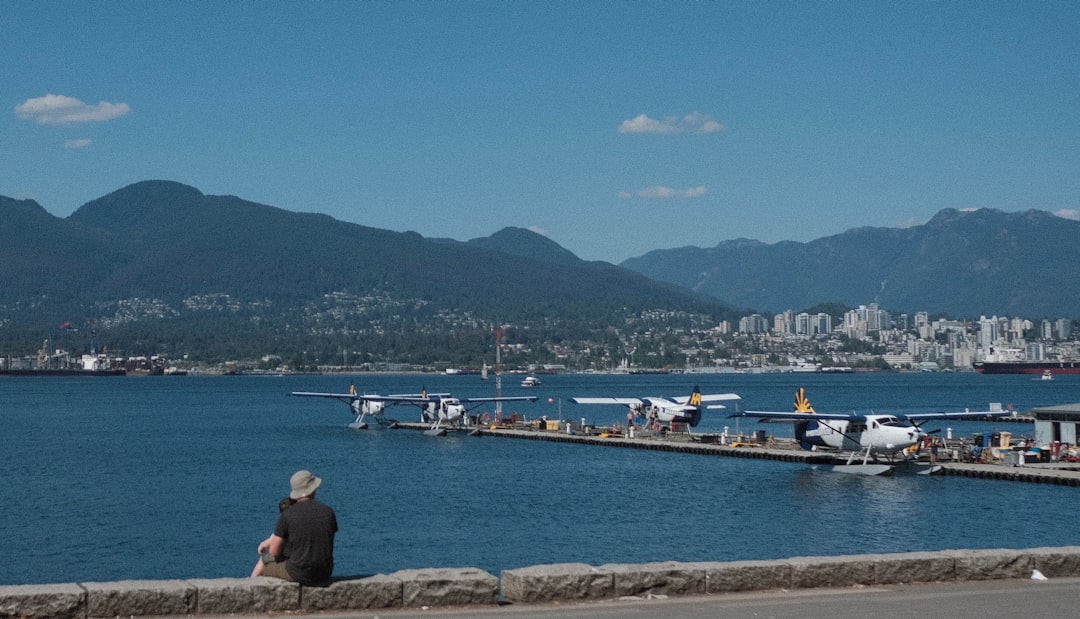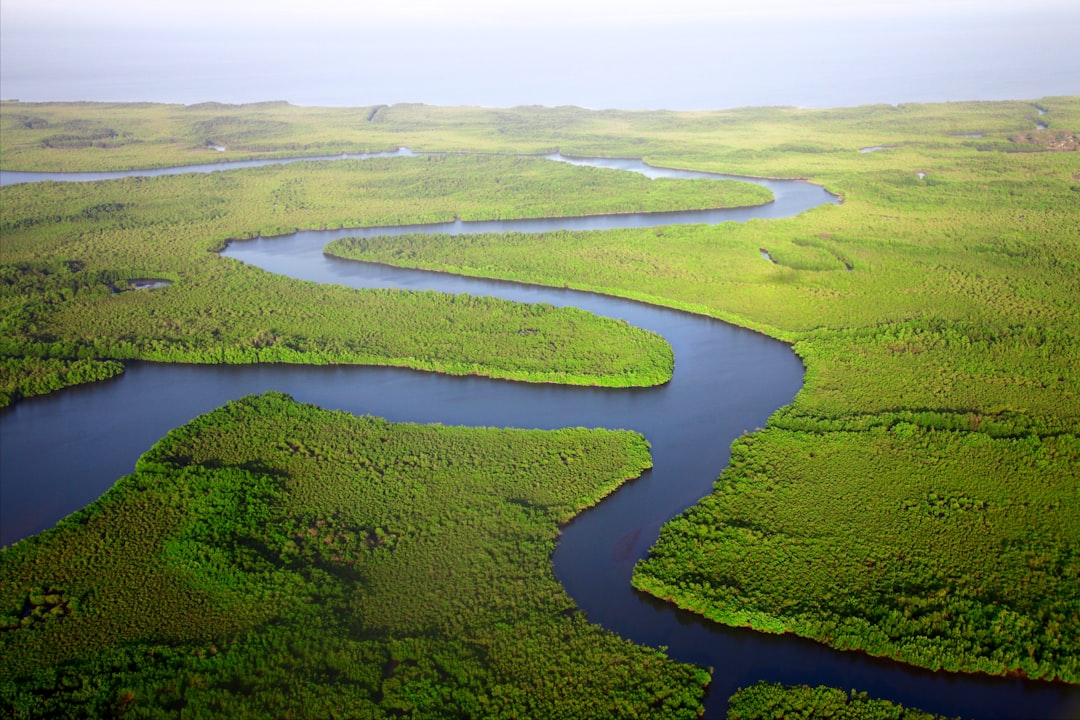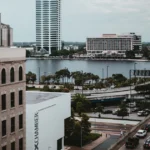Support our educational content for free when you purchase through links on our site. Learn more
What Role Did the St Johns River Play in Naming Cowford & Jacksonville? 🌊

Did you ever wonder why Jacksonville was once called Cowford? Spoiler alert: it all comes down to the mighty St. Johns River! This river isn’t just a scenic backdrop—it’s the original lifeline that shaped the city’s identity, economy, and even its name. From cattle crossing a narrow river ford to a bustling port city, the St. Johns River’s story is as winding and fascinating as the river itself. Stick with us as we unravel 5 fascinating facts about how this waterway influenced the naming and growth of Cowford and later Jacksonville. You won’t want to miss the surprising role a herd of cows played in Florida’s biggest city!
Ready to dive into history, culture, and river lore? Let’s explore how the St. Johns River carved its name into Jacksonville’s legacy and why it still flows at the heart of the city today.
Key Takeaways
- The name “Cowford” originated from a shallow crossing on the St. Johns River where cattle were driven across, making the river central to early settlement identity.
- The St. Johns River served as a vital transportation and trade route, enabling Cowford’s evolution into the port city of Jacksonville.
- The river’s strategic importance shaped colonial conflicts, economic growth, and cultural life in the region.
- Today, the St. Johns River remains a defining feature of Jacksonville’s geography, economy, and community spirit.
- Preservation efforts are underway to protect this historic river and its ecosystem for future generations.
👉 Shop Outdoor & River Exploration Gear:
- Pelican Kayaks: Amazon | Pelican Official Website
- Yeti Coolers: Amazon | Yeti Official Website
- Columbia Outdoor Apparel: Amazon | Columbia Official Website
Table of Contents
- Quick Tips and Facts About the St. Johns River and Cowford 🏞️
- The St. Johns River: Lifeline of Early Cowford and Jacksonville 🌊
- Why “Cowford”? The River’s Role in Naming Jacksonville’s Original Settlement 🐄
- From Cowford to Jacksonville: How the River Influenced the City’s Evolution 🏙️
- The Strategic Importance of the St. Johns River in Colonial and Native American Times ⚔️
- Economic Impact: River Trade, Ferry Crossings, and the Growth of Cowford 🚢
- Cultural and Social Life Along the St. Johns: How the River Shaped Community Identity 🎭
- Environmental Influence: The River’s Ecosystem and Its Effect on Settlement Patterns 🌿
- Modern-Day Jacksonville and the St. Johns River: Legacy and Preservation Efforts 🌆
- 5 Fascinating Facts About the St. Johns River’s Role in Jacksonville’s History 🧐
- Conclusion: Why the St. Johns River Remains Jacksonville’s Heartbeat ❤️
- Recommended Links for Deep Dives into Jacksonville’s River History 🔗
- FAQ: Your Burning Questions About Cowford, Jacksonville, and the St. Johns River Answered ❓
- Reference Links: Trusted Sources on Jacksonville and the St. Johns River 📚
Quick Tips and Facts About the St. Johns River and Cowford 🏞️
- The St. Johns River flows north for 310 miles, making it the longest river in Florida. Source: St. Johns River Water Management District
- Before it was called Jacksonville, the area was known as “Cowford” due to the cows fording (crossing) the St. Johns River at a narrow point. Learn more about why Jacksonville was called Cowford.
- The St. Johns River is one of the few major rivers in the continental United States that flows north.
- The river has a wide variety of ecosystems, including freshwater springs, swamps, marshes, and the Atlantic Ocean.
The St. Johns River: Lifeline of Early Cowford and Jacksonville 🌊
The St. Johns River wasn’t just a geographical feature; it was the lifeblood of early Cowford and later, Jacksonville. Imagine a time before cars, trains, or even well-established roads. The river was the main artery for transportation, trade, and communication.
Transportation and Trade 🚢
The St. Johns River provided a natural highway for Native Americans and, later, European settlers. We know from archaeological evidence and historical accounts that indigenous people used canoes to navigate the river for centuries, trading goods and establishing communities along its banks. When Europeans arrived, they quickly recognized the river’s value for shipping agricultural products, timber, and other resources.
A Natural Boundary and Strategic Asset ⚔️
The St. Johns River also served as a natural boundary and a strategic asset during various conflicts. For the Timucua, who lived along the river for centuries, it provided a degree of protection and isolation. Later, during colonial times, control of the river was crucial for both the Spanish and the British. Fort Caroline, a short-lived French settlement (1564-1565) located on the banks of the St. Johns, highlights the river’s strategic importance in the struggle for control of Florida.
Why “Cowford”? The River’s Role in Naming Jacksonville’s Original Settlement 🐄
The name “Cowford” might seem a bit odd at first, but it makes perfect sense when you understand the geography and the practices of early settlers. Picture this: vast herds of cattle being driven southward through Florida towards markets in St. Augustine. The St. Johns River, with its often-swampy banks, posed a formidable obstacle.
The Narrow Crossing Point 🏞️
However, there was one spot, right around where downtown Jacksonville is today, where the river narrowed considerably. This natural ford, or shallow crossing, made it possible for cattle to traverse the river. Hence, the name “Cowford” stuck! It was a descriptive and practical name for a settlement that sprung up around this vital crossing point.
From Cowford to Jacksonville: How the River Influenced the City’s Evolution 🏙️
The transition from “Cowford” to “Jacksonville” in 1822 marked more than just a name change. It reflected the growing importance of the settlement and its ambitions to become a major port city. And, of course, the St. Johns River played a pivotal role in this transformation.
A Thriving Port City 🚢
As Jacksonville grew, so did its reliance on the river. The St. Johns provided access to the Atlantic Ocean, opening up trade routes to the rest of the East Coast and beyond. Shipbuilding became a significant industry, and Jacksonville’s wharves bustled with activity. The riverfront became a hub of commerce, transportation, and social life.
Shaping the Cityscape 🌆
The St. Johns River also influenced Jacksonville’s physical layout. Early development clustered along the riverbanks, taking advantage of transportation and trade opportunities. Later, as the city expanded, bridges were built to connect different parts of Jacksonville, further solidifying the river’s role as a central artery. Even today, the St. Johns River defines Jacksonville’s identity, offering scenic beauty, recreational opportunities, and a reminder of the city’s rich history.
The Strategic Importance of the St. Johns River in Colonial and Native American Times ⚔️
The St. Johns River has always been a strategic waterway, coveted by Native American groups and European powers alike. Control of the river meant control of trade, transportation, and access to the interior of Florida.
Native American Significance 🏹
For centuries before European arrival, the Timucua people thrived along the St. Johns River. The river provided sustenance, transportation, and a means to connect with other tribes. The Timucua were skilled fishermen and hunters, and they navigated the river with expertise, using dugout canoes made from cypress logs.
European Rivalries and Conflicts ⚔️
The arrival of Europeans in the 16th century ignited a struggle for control of Florida, and the St. Johns River became a focal point of this conflict. The Spanish, French, and British all vied for dominance, establishing forts and settlements along the riverbanks. The river witnessed numerous skirmishes and battles as these colonial powers clashed for supremacy.
Economic Impact: River Trade, Ferry Crossings, and the Growth of Cowford 🚢
The St. Johns River was the economic engine of early Cowford. It facilitated trade, provided a means of transportation, and attracted settlers seeking new opportunities.
A Natural Highway for Commerce 🚢
The river was a natural highway for transporting goods to and from the interior of Florida. Timber, cotton, citrus, and other agricultural products were shipped downriver to Jacksonville, where they were loaded onto larger vessels bound for markets along the East Coast and beyond.
Ferry Crossings: Connecting Communities ⛴️
Before bridges spanned the St. Johns River, ferries provided a vital link between communities on opposite banks. These ferries transported people, livestock, and goods, contributing to the growth and development of settlements along the river.
The Rise of Jacksonville as a Port City 🏙️
As Jacksonville grew in size and importance, so did its reliance on the St. Johns River. The river’s deepwater access made it possible for larger ships to dock, further boosting trade and commerce. Jacksonville’s strategic location at the mouth of the St. Johns River positioned it to become a major port city, a role it continues to play today.
Cultural and Social Life Along the St. Johns: How the River Shaped Community Identity 🎭
The St. Johns River wasn’t just an economic lifeline; it was also the heart of social and cultural life in early Jacksonville. The river provided a gathering place, a source of recreation, and a shared experience that fostered a sense of community.
Riverfront Gatherings and Celebrations 🎉
In the days before organized entertainment, the riverfront was the place to be. People gathered along the banks of the St. Johns for picnics, concerts, and community events. The river provided a scenic backdrop for celebrations and a place to escape the summer heat.
Recreation and Leisure on the Water 🚣♀️
The St. Johns River offered ample opportunities for recreation and leisure. Boating, fishing, and swimming were popular pastimes, and the river teemed with fish and other aquatic life. Steamboat excursions up and down the river were a favorite way to spend an afternoon, offering scenic views and a chance to socialize.
The River as a Source of Inspiration 🎨
The beauty and tranquility of the St. Johns River have long inspired artists, writers, and musicians. From the lush landscapes depicted in paintings to the evocative descriptions in literature, the river has captured the imaginations of generations.
Environmental Influence: The River’s Ecosystem and Its Effect on Settlement Patterns 🌿
The St. Johns River’s unique ecosystem played a significant role in shaping settlement patterns and influencing the development of Jacksonville. The river’s diverse habitats, from freshwater springs to brackish marshes, supported a wide array of plant and animal life, attracting both Native Americans and European settlers.
Abundance of Natural Resources 🐟
The St. Johns River teemed with fish and shellfish, providing a vital food source for indigenous people and early settlers. The surrounding forests were home to game animals, and the fertile floodplain soils were ideal for agriculture. This abundance of natural resources made the river a magnet for human settlement.
Navigating the River’s Challenges 🐊
While the St. Johns River offered numerous advantages, it also presented challenges. The river’s shallow depths in some areas limited navigation, and its meandering course made travel time unpredictable. The presence of alligators and other wildlife also posed risks.
Adapting to the River’s Rhythms 🌦️
Early settlers had to adapt to the river’s rhythms, learning to navigate its changing currents and seasonal fluctuations. They built their homes on higher ground to avoid flooding and developed fishing techniques suited to the river’s unique ecosystem.
Modern-Day Jacksonville and the St. Johns River: Legacy and Preservation Efforts 🌆
The St. Johns River continues to play a vital role in modern-day Jacksonville, shaping the city’s identity, economy, and quality of life. However, the river also faces challenges from pollution, development, and the impacts of climate change.
The River as a Defining Feature 랜드마크
The St. Johns River remains a defining feature of Jacksonville’s landscape, offering scenic beauty, recreational opportunities, and a connection to the city’s past. The riverfront has undergone significant revitalization in recent decades, with parks, promenades, and cultural attractions drawing residents and visitors alike.
Economic Significance: From Port to Tourism 🚢
The St. Johns River continues to be an economic powerhouse for Jacksonville. The port of Jacksonville ranks among the busiest in the United States, handling millions of tons of cargo annually. Tourism is another major industry, with the river attracting boaters, anglers, and nature enthusiasts.
Environmental Protection and Restoration Efforts 🌿
Recognizing the importance of the St. Johns River, Jacksonville has implemented numerous initiatives to protect and restore its health. These efforts include reducing pollution, improving water quality, and preserving sensitive habitats. Organizations like the St. Johns Riverkeeper play a crucial role in advocating for the river’s health and holding polluters accountable.
5 Fascinating Facts About the St. Johns River’s Role in Jacksonville’s History 🧐

- The “Public Highway”: Did you know that in 1854, the Florida Legislature officially declared the St. Johns River a “public highway”? This designation highlighted its importance for transportation and commerce.
- Steamboat Era: The arrival of steamboats in the early 19th century revolutionized travel and trade on the St. Johns River. Jacksonville became a major steamboat hub, with regular routes connecting it to other cities along the river and the Atlantic coast.
- Civil War Blockade: During the Civil War, the Union Navy blockaded the St. Johns River, disrupting Confederate trade and transportation. Jacksonville changed hands several times during the war, highlighting the river’s strategic significance.
- Resort Destination: In the late 19th and early 20th centuries, Jacksonville became a popular winter resort destination, attracting wealthy tourists from the Northeast. The St. Johns River played a central role in this tourism boom, offering scenic beauty, recreational opportunities, and a respite from harsh winters.
- Riverwalk Revitalization: In recent decades, Jacksonville has made significant investments in its riverfront, creating a vibrant public space for residents and visitors. The Southbank Riverwalk and Northbank Riverwalk offer miles of pedestrian walkways, parks, restaurants, and cultural attractions, showcasing the beauty and vitality of the St. Johns River.
Conclusion: Why the St. Johns River Remains Jacksonville’s Heartbeat ❤️

So, what’s the bottom line on the St. Johns River’s role in naming Cowford and shaping Jacksonville? It’s simple: the river was the original lifeline, highway, and heartbeat of the region. From the narrow cattle crossing that gave Cowford its name to the bustling port city that Jacksonville became, the St. Johns River was always front and center.
The river’s natural geography dictated settlement patterns, economic growth, and cultural identity. Without that shallow “cow ford,” we might not be talking about Jacksonville today! And as the city evolved, the river continued to inspire, sustain, and connect its people.
At Jax Facts™, we’re convinced that understanding the St. Johns River is key to appreciating Jacksonville’s rich past and vibrant present. Whether you’re a history buff, a nature lover, or just curious about why Jacksonville is called what it is, the river’s story is your story.
Ready to dive deeper? Keep exploring the river’s legacy and maybe even plan a visit to the riverwalk or a boat tour to experience firsthand the waterway that shaped a city.
Recommended Links for Deep Dives into Jacksonville’s River History 🔗
-
Books on Jacksonville and the St. Johns River:
-
👉 Shop River and Outdoor Gear for Exploring the St. Johns:
- Pelican Kayaks: Amazon | Pelican Official Website
- Yeti Coolers: Amazon | Yeti Official Website
- Columbia Outdoor Apparel: Amazon | Columbia Official Website
-
Learn More About the Cowford Ball:
- Official Cowford Ball Website: cowfordball.acscbb.org
FAQ: Your Burning Questions About Cowford, Jacksonville, and the St. Johns River Answered ❓

What is the historical significance of the St Johns River in Jacksonville, Florida?
The St. Johns River is the longest river in Florida, flowing northward for over 300 miles. It was a crucial transportation route for Native Americans and early European settlers, facilitating trade, travel, and settlement. The river’s strategic location made it a contested asset during colonial times and a foundation for Jacksonville’s growth as a port city. Its ecological diversity also supported abundant natural resources that sustained communities for centuries.
Read more about “What Makes Jacksonville So Special? 10 Unique Highlights to Explore! 🌟 …”
How did the city of Jacksonville get its name and what are its origins?
Jacksonville’s roots trace back to a settlement called Cowford, named for the narrow crossing on the St. Johns River where cattle were driven across. In 1822, the town was renamed Jacksonville in honor of Andrew Jackson, the first military governor of Florida and later U.S. president. The name change reflected the settlement’s ambitions to grow beyond a cattle crossing into a thriving city.
What role did the Cowford settlement play in the development of modern-day Jacksonville?
Cowford was the original nucleus of what would become Jacksonville. Its location at the narrow ford on the St. Johns River made it a natural hub for cattle drives, trade, and transportation. Over time, as commerce expanded and infrastructure improved, Cowford evolved into Jacksonville, leveraging the river’s access to the Atlantic Ocean to become a major port and metropolitan area.
Read more about “Why is Jacksonville a Bold City? 10 Reasons to Explore! 🌟 …”
What are some popular attractions and activities along the St Johns River in Jacksonville, Florida?
Jacksonville offers a wealth of riverfront attractions:
- Southbank and Northbank Riverwalks: Scenic pedestrian paths with parks, restaurants, and cultural venues.
- Boat tours and kayaking: Explore the river’s natural beauty and wildlife.
- Fishing and water sports: The river is a hotspot for anglers and water enthusiasts.
- Historic sites: Fort Caroline National Memorial and other landmarks highlight the river’s colonial past.
- Annual events: The Cowford Ball celebrates the city’s heritage with a philanthropic twist.
How did the St. Johns River influence Jacksonville’s economy historically and today?
Historically, the river was Jacksonville’s economic backbone, enabling the transport of timber, cotton, and other goods. The arrival of steamboats and the establishment of port facilities accelerated growth. Today, the Port of Jacksonville remains one of the busiest in the U.S., and the river supports tourism, recreation, and environmental initiatives critical to the city’s economy.
What environmental challenges does the St. Johns River face, and how is Jacksonville addressing them?
Urban development, pollution, and climate change pose ongoing threats to the river’s health. Jacksonville has launched multiple initiatives to improve water quality, restore habitats, and reduce runoff. Groups like the St. Johns Riverkeeper actively monitor pollution and advocate for sustainable practices to preserve this vital resource for future generations.
Reference Links: Trusted Sources on Jacksonville and the St. Johns River 📚
-
History of the St. Johns River – Jacksonville Historical Society:
jaxhistory.org/resources/history-of-the-st-johns-river -
Legal History of Cowford and Jacksonville – SGR Law:
sgrlaw.com/ttl-articles/899 -
Cowford Ball Official Site – American Cancer Society Event:
cowfordball.acscbb.org -
St. Johns River Water Management District:
sjrwmd.com/waterways/stjohns -
Port of Jacksonville Official Website:
jaxport.com -
St. Johns Riverkeeper Environmental Advocacy:
sjriverkeeper.org
For more fascinating insights into Jacksonville’s rich history and geography, check out our Jacksonville History and Jacksonville Geography categories at Jax Facts™!




